The Titanic’s Tragic Night Through the Eyes of August Wennerström
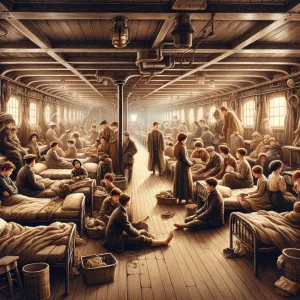 As the grandeur of the Titanic’s first-class festivities echoed through the corridors, below decks in the cramped, cold confines of third-class, August Wennerström penned what would soon become a harrowing survival story amidst one of the most infamous disasters in maritime history.
As the grandeur of the Titanic’s first-class festivities echoed through the corridors, below decks in the cramped, cold confines of third-class, August Wennerström penned what would soon become a harrowing survival story amidst one of the most infamous disasters in maritime history.
On a seemingly calm night in 1912, the Titanic faced its destiny with an iceberg in the frigid waters of the North Atlantic. This post explores that fateful encounter through the eyes of August Wennerström, a third-class passenger whose vivid account provides a unique lens on the socio-economic divides and human struggles aboard the ill-fated liner.
Life Below Decks
August Wennerström, a young Swedish immigrant, was among the hopeful souls traveling third-class, dreaming of a new life in America. His observations detail the lively yet constrained environment of third-class quarters, starkly contrasting with the wealth and luxury above. Here, families shared their dreams and fears, weaving a tapestry of camaraderie against a backdrop of harsh reality.
The Collision and Immediate Aftermath
The night of April 14, 1912, started like any other aboard the Titanic, with third-class passengers like August Wennerström settling into their quarters for the evening. The ship’s vibrations subtly shifted as the engines powered through the North Atlantic’s icy waters. At 11:40 PM, the ship shuddered violently—a jolt that sent a murmur of concern rippling through the steerage decks. Wennerström, curious and anxious, ventured out from his cabin to grasp the situation.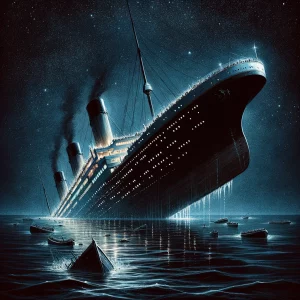
Emerging into the corridors filled with confused and frightened passengers, Wennerström witnessed firsthand the disparity in information flow between the classes. While first-class passengers received prompt updates and were quickly ushered to the lifeboats, those in steerage were met with delays and uncertainty. In his diary, Wennerström noted, “The lack of direction was more chilling than the cold air biting at our skins.”
As the gravity of the situation became apparent, Wennerström observed families gathering their belongings, praying, and some attempting to make their way to the upper decks. The corridors became congested with people, all struggling to move upwards against a tide of confusion and language barriers. The yelling of multiple languages filled the air, with screams for help and instructions often drowned out by the growing panic.
Despite the chaos, Wennerström managed to help several families, including young children, navigate through the narrow passages. His account details poignant moments of human solidarity and desperate survival instincts as the ship continued to list dangerously.
| Did You Know
At the time of the Titanic’s construction, it was the largest moving object ever built. Its passengers included some of the wealthiest people in the world, yet the majority aboard were immigrants like Wennerström, filled with hope for the future but occupying the most vulnerable positions on the ship. |
A Tale of Two Titans – Class Disparities During the Disaster
As the Titanic’s fate became grimly apparent, Wennerström’s observations of class disparities became more pronounced. From the corridors of third-class, the echoes of orderly evacuations in the upper decks were a stark contrast to the confusion and neglect faced below. He wrote of seeing barriers physically and symbolically dividing the classes, with some gates locked and guarded, preventing third-class passengers from reaching the lifeboats readily available to their wealthier counterparts.
His writings reveal a critical moment: “As we pleaded for passage, the gates remained closed, and above us, the sounds of safety seemed as distant as the stars.” This poignant reflection captured not only the physical barriers but also the social hierarchies that dictated survival chances.
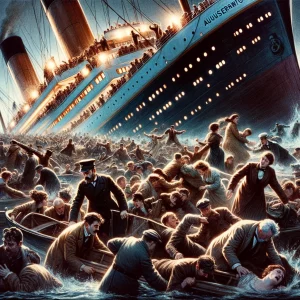 Wennerström’s struggle intensified as he decided to take matters into his own hands. His account details a daring move where he assisted a group of fellow passengers in forcing open one of the locked gates. The surge of people moving upwards brought both hope and turmoil, as every step closer to the deck was met with resistance and chaos.
Wennerström’s struggle intensified as he decided to take matters into his own hands. His account details a daring move where he assisted a group of fellow passengers in forcing open one of the locked gates. The surge of people moving upwards brought both hope and turmoil, as every step closer to the deck was met with resistance and chaos.
As the night wore on, the cold deepened, and the ship’s angle became more perilous, Wennerström finally reached the boat deck. The sight was overwhelming: children crying, women praying, and officers desperately trying to maintain order. Despite the desperate scene, he noted moments of profound humanity—first-class passengers throwing spare life jackets down to lower decks and some crew members defying orders to help the steerage passengers.
In these final moments, Wennerström’s fate hung precariously. He vividly described the chaos during the loading of the last lifeboats and his eventual, miraculous boarding onto a partially filled lifeboat, thanks to the intervention of a sympathetic crew member who recognized his earlier efforts to help others.
The Struggle for Survival
As dawn broke on April 15, 1912, the Titanic, once a symbol of human achievement and grandeur, lay beneath the icy waters of the North Atlantic. Wennerström, now safe but shivering aboard a lifeboat, watched as the unthinkable happened. The ship that was deemed unsinkable had succumbed to the sea, taking with it over 1,500 souls. His survival was not just a matter of luck but a testament to human will and the instinct to aid one another in times of dire need.
Wennerström’s diary entries from the lifeboat captured a mixture of relief and profound sadness: “We are saved, yet so many are lost. The sea is calm now, as if to forget the night’s horrors.” These words encapsulate the emotional turmoil experienced by survivors, who had to reconcile their survival with the tragic loss of life.
The Titanic disaster prompted significant changes in maritime safety, including the establishment of the International Convention for the Safety of Life at Sea (SOLAS) in 1914, which still governs maritime safety today. The tragedy also left an indelible mark on public consciousness, symbolising both human fallibility and courage
August Wennerström’s journey from the depths of the Titanic to the safety of a lifeboat is more than a survival story; it is a reminder of our shared humanity and the
that can both hinder and propel our collective actions. His final diary entry offers a poignant reflection: “We must carry the lessons of this night forward, not just in our laws but in our hearts.”
References
“Titanic: Voices from the Disaster” by Deborah Hopkinson
“The Story of the Titanic As Told by Its Survivors” by Jack Winocour
“A Night to Remember” by Walter Lord
“The Titanic: Disaster of the Century” by Wyn Craig Wade
“Titanic Survivor” by Violet Jessop
“Lost Voices from the Titanic” by Nick Barratt
“Sinking of the Titanic: Eyewitness Accounts” by Logan Marshall
“Report on the Loss of the SS Titanic” by the British Wreck Commissioner’s Inquiry, 1912
“Titanic: The Real Story of the Construction, Voyage and Disaster” by Geoff Tibballs
“Unsinkable: The Full Story of the RMS Titanic” by Daniel Allen Butler

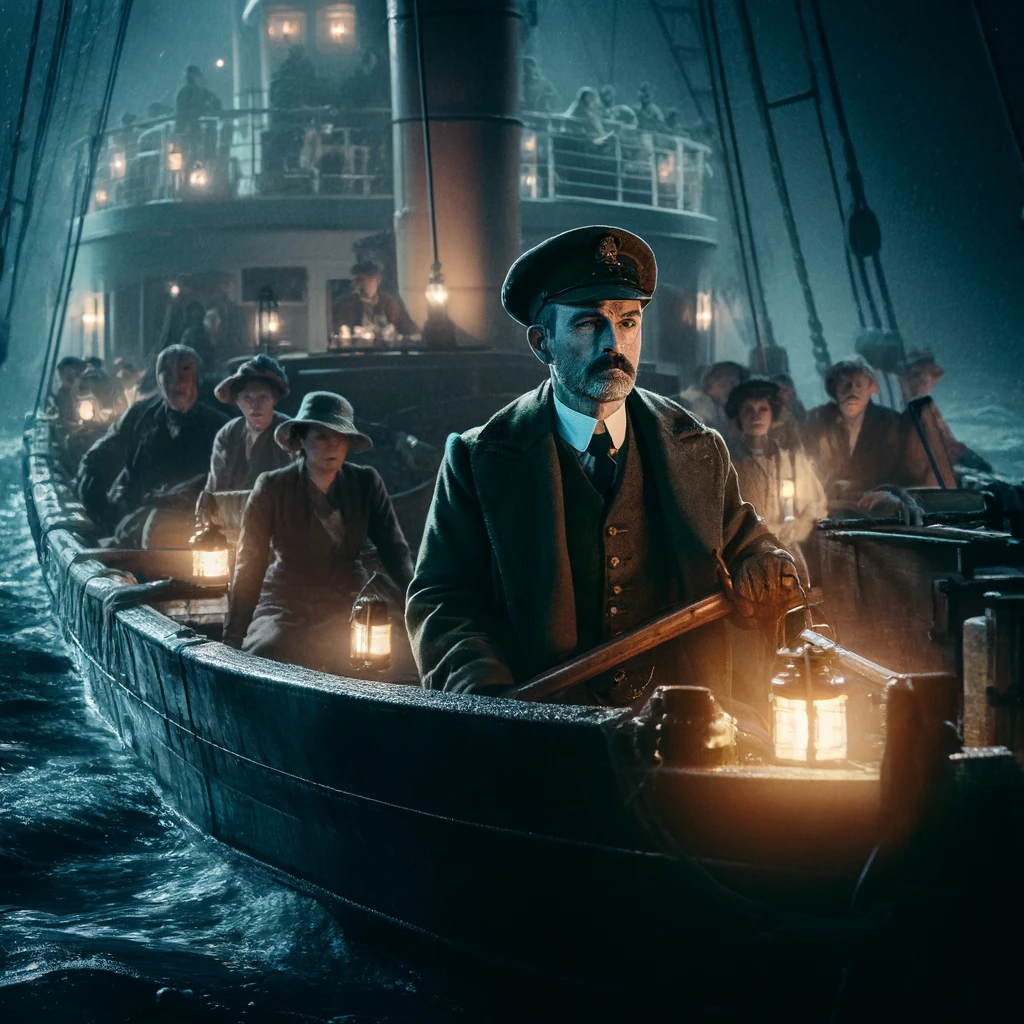
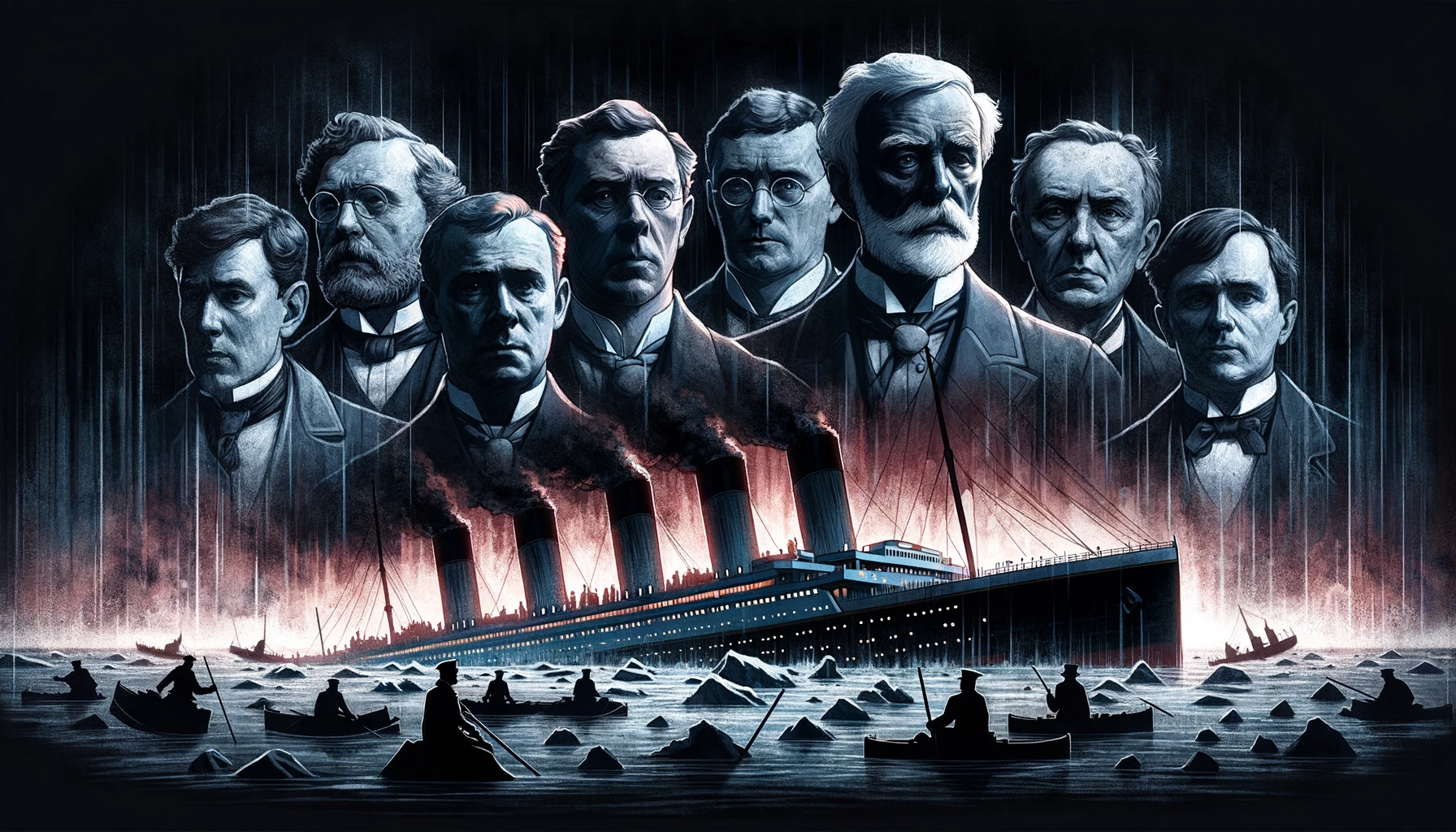
0 Comments